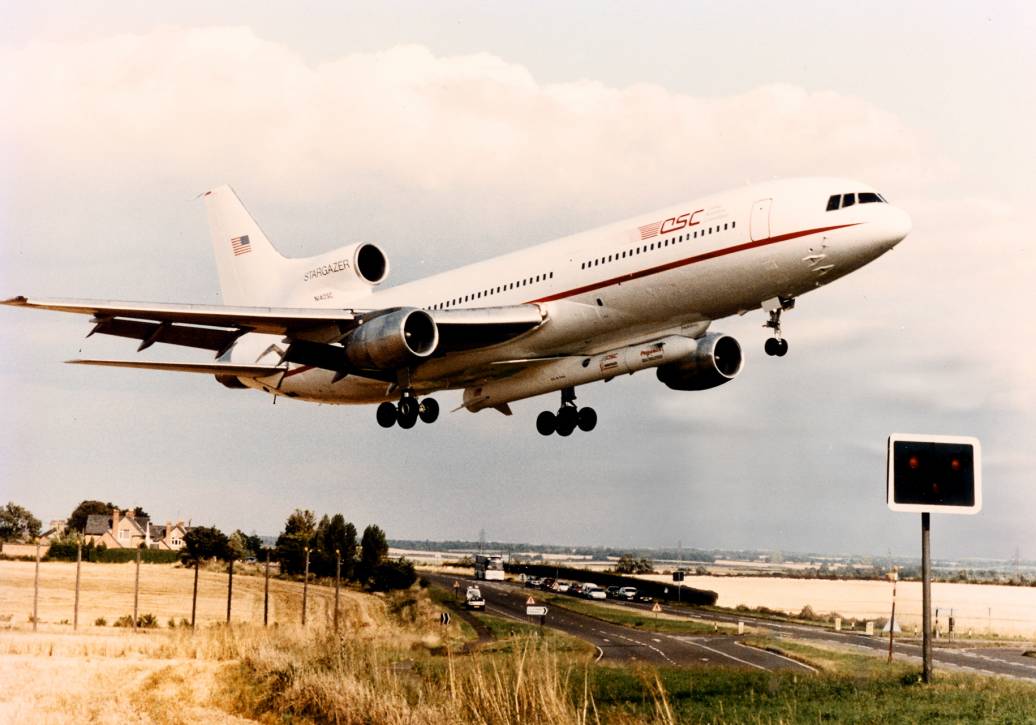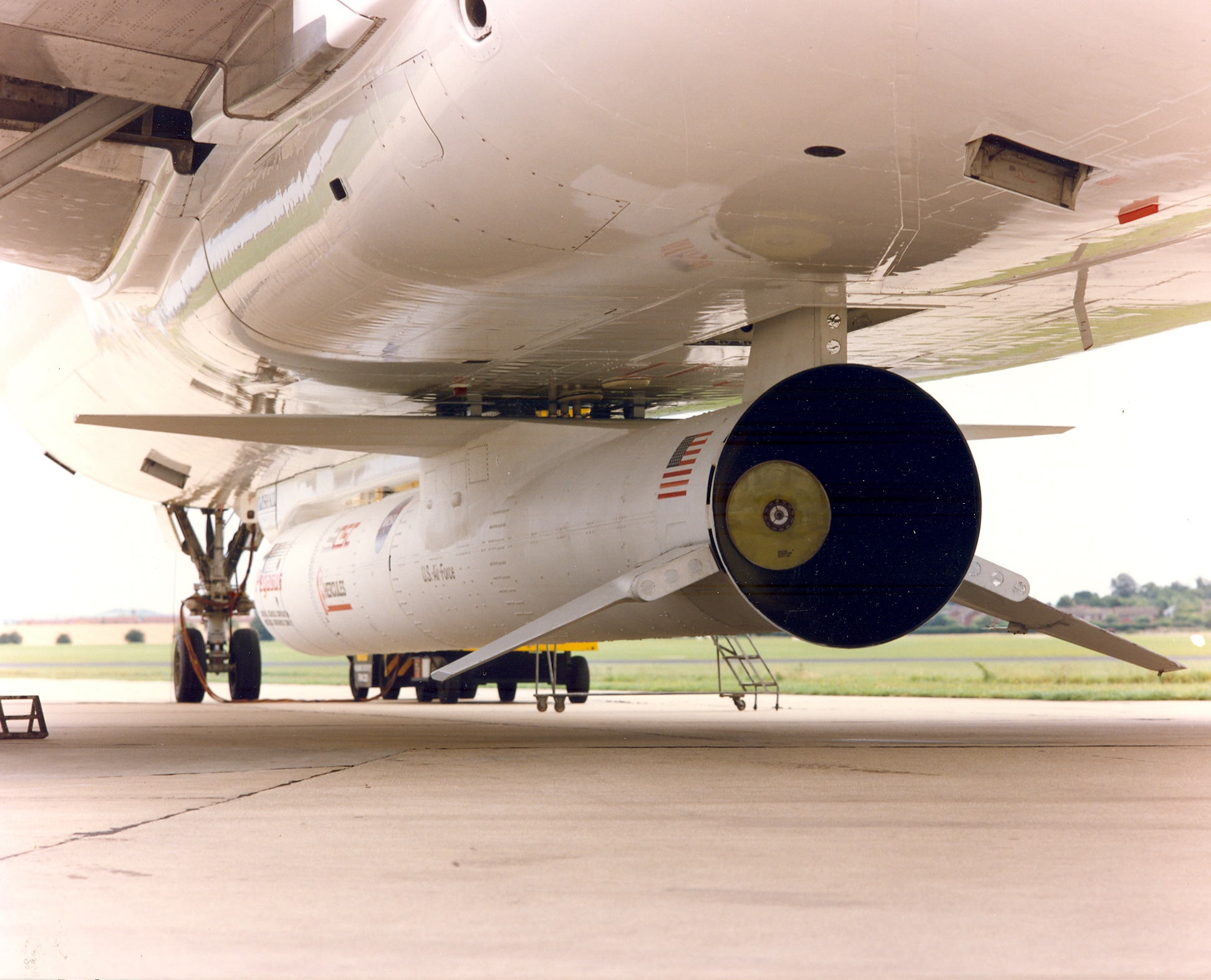
Today marks exactly 30 years since the successful test flight of "Stargazer" - a Lockheed L-1011 TriStar modified by Marshall to carry a Pegasus XL satellite launch vehicle. The story still stands as a demonstration of Marshall’s unique aircraft modification capabilities and ability to deliver complex engineering projects.
US-based Orbital Sciences Corporation (OSC) – now part of Northrop Grumman Innovation Systems – selected Marshall Aerospace to perform the design and conversion due to its prior track record of major modification programmes on the TriStar platform.
The world's first privately-developed orbital launch vehicle, Pegasus XL is a three stage solid propellent launcher, carried to 35,000 feet before being pre-programmed and free dropped. The Pegasus engines then carry the payload to a deployment height of roughly 400 miles.

At the time, Pegasus XL was believed to be the heaviest gravity-dropped article ever released from an aircraft, weighing in at over 23,000 kg. The previous version, which was carried by a B-52, weighed 19,000 kg.
Originally part of the Air Canada fleet before being purchased by OSC, Stargazer was extensively modified by Marshall Aerospace for its new role. The modification mainly involved removing all unnecessary equipment and systems in the aircraft; strengthening the wing box area; manufacturing and installing the main carriage/release mechanism; and installing the launch panel operator station, plus support systems enabling the launch operator to monitor Pegasus during captive flight and launch.

Marshall also oversaw the design, manufacture and installation of all the systems, ground and flight testing, as well as FAA Supplemental Type certification.
Stargazer’s first test post-modification flight, carrying a dummy payload, was conducted from Cambridge Airport on August 10, 1993, and was a success. Following completion of the test flight programme, Marshall Aerospace prepared the aircraft for final presentation to OSC in Washington in November 1993. OSC then conducted a successful launch in April 1995.

Four Marshall Aerospace engineers were selected to receive NASA's Orbital Launch Services Peer Award for their part in the Pegasus conversion programme: Director of Engineering Bob Ward, Chief Designer Jim Webb, Chief Structural Engineer Graham Redgrave and Programme Manager Kieran Gracie.
"Stargazer" is the last active L-1011 Tristar still in existence, and still serves in its role as the launch pad for the Pegasus XL vehicle. Its most recent flight was in 2021 from Vandenberg Space Force Base, carrying Odyssey, a technology demonstration satellite.
